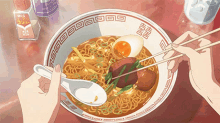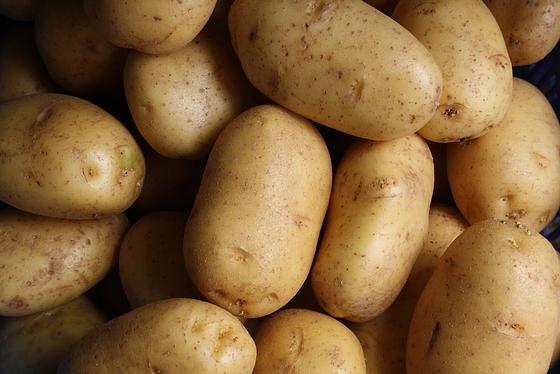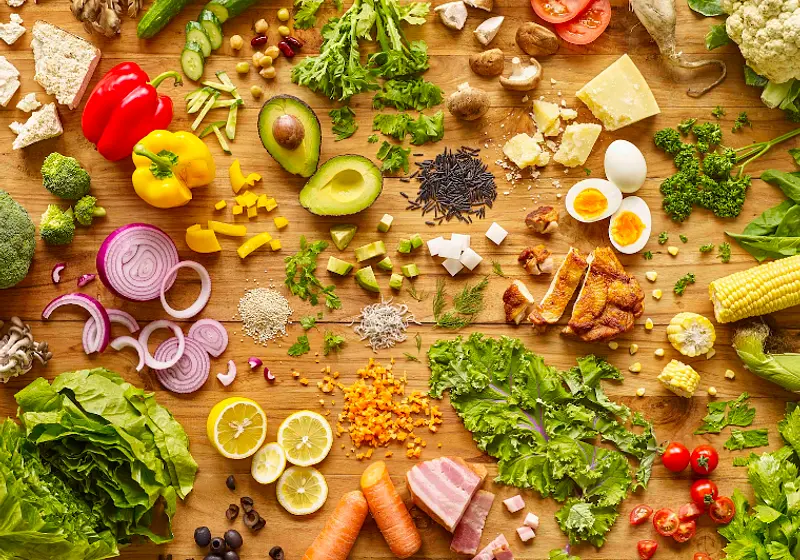"Stories about food are stories about us-our history and our values.”
— Jonathan Safran Foer
Let us slide into your dms 🥰
Get notified of top trending articles like this one every week! (we won't spam you)What is Food History?
Since the dawn of civilization, food has been intertwined with our identity. The relationship, which was based on survival, has now evolved into a source of love, connection, and culture. Our modern ideas about food are rooted in flavor and tradition, but I also hope to open your eyes (and taste buds) to the history of our food.
Food history is the study of food evolution throughout and alongside human history. It examines the cultural, social, political and economic factors that have influenced how people have produced, prepared, and consumed food over time.

Take the Quiz: What Ramen Are You?
There are sooo many pre-packaged Ramen brands out there. Which one should you try/best fits your personality?
How is it relevant to teenagers?
Learning and reading about food history is more relevant to teenagers than one might think. Firstly, learning where our food comes from in a historical sense, and how it has evolved over time allows us to gain a new understanding and appreciation of the food we eat daily. Additionally, learning about food history can help teenagers make more informed choices about the food they consume.
By understanding how certain foods became popular or were introduced into a particular region, we can develop a deeper understanding of the health benefits and nutritional value of different foods. Food history can also inspire teens to explore cooking or baking in a new, creative way. Finally, learning about food history can be a fun and engaging way to learn about history in general.
In this article, I will share narratives illustrating the history of four widely consumed foods that have been influential in shaping agriculture.
Salt
The role of salt has had such a crucial impact in the last seven thousand years that many words in the English language are derived from the word Sal, which is salt in Latin. One example of this is the word salary. Commonly referred to as white gold, salt was such a precious commodity during the Roman Empire that soldiers in the Roman army were paid in salt instead of money.
This payment was called “salarium” and this term evolved into the word salary. Another word which shares ties with salt is salad. The word salad came from the Latin phrase, "herba salata" meaning salted greens because Romans would dress greens and other raw vegetables in salt to enhance flavor, the early version of salad dressing. Around the world, as early as 5000 years ago, salt was used by many religions as a tribute or offering to deities and that's where the word salute or salutations comes from.
Salt's importance comes from its preservative properties. Once early human societies formed, agriculture increased drastically and since there were no methods of refrigeration 2000 years ago, salt became worth more than gold. Because it is able to preserve food for months or even years, the demand for salt increased and led to the use of salt for economic reasons.
Salt’s importance played a role in the development of human history. My favorite example of this is the indirect creation of what is now the Russian Orthodox Church. At the time, the Viking Ruik dynasty was in control of what is now Russia and surrounding regions, known as the Kievan Rus. The king, Volodymyr the Great, wanted to choose a religion to unite his kingdom because he feared political unrest.
He sent ambassadors to multiple countries to survey their religions, including Constantinople of the Byzantine Empire, which was controlled by the Greeks at the time. Home of the Eastern Orthodox church, Constantinople was prospering because of Greek control over salt production, as well as spice trade from the silk road.
After surveying multiple religions, he dismissed Islam due to the prohibition of alcohol and Judaism because of the religion’s lack of mass wealth. The King sent royal emissaries who were amazed at the beauty of a city that had been completely financed by salt.
Artist's rendering of Constantinople by Antoine Helbert
With his understanding of salt's importance, he believed the introduction of that religion would result in prosperity, status and wealth for the Kievan Rus. He was baptized in 988, and the rest of his principalities followed suit. The Russian Orthodox Church came from this branch of Orthodox religion and was formed in 1448.
Tomatoes
Before they became a kitchen staple, tomatoes probably had the worst reputation of any fruit in history. During a period of mass hysteria surrounding witches, it was believed that tomatoes were the main ingredient in “Witches Brew” and this was because reported witch attacks coincided with the beginning of mass imports of tomatoes from Mesoamerica. Tomatoes were also believed to turn people into werewolves and were commonly referred to as a “wolf’s peach.” These misconceptions then followed the tomato to newly created America.
Thought to be poisonous because it is a member of the Nightshade family, which also contains many deadly, poisonous plants like mandrakes, tomatoes were shunned from American and European tables. This myth was put to rest when Colonel Johnson of Salem, New Jersey ate a whole basket of tomatoes outside the Salem Courthouse and didn’t suffer from any of the preconceived symptoms of poisoning.
Tomatoes were also the subject of controversy in 1893 when the US Supreme Court was responsible for deciding if they were a fruit or a vegetable. This was brought to their attention by a tomato importer who was trying to avoid the 10 percent tax on vegetable importation imposed by the US government.
By arguing that tomatoes were technically fruit, he hoped to exempt his imports from taxation. This legal battle lasted six years, but after reading various definitions and viewing testimony from experts on vegetation, the supreme court declared that tomatoes were a vegetable. Their main reason for this decision was that tomatoes were served at dinner, and “not, like fruits generally [are], as dessert.”
Despite all this, tomatoes are one of the most consumed foods in the world and now are rightfully classified as a fruit.
Potatoes
Much like tomatoes, potatoes were first feared before they became a staple of our diet. Commonly used in pigs' feed, the French thought the deformed root vegetables spread diseases such as leprosy, and banned them in 1748. The French came to this conclusion since potatoes bore resemblance to the sores, bumps and swelling that occurred on the skin of Leprosy patients.
Russians, at the time, also weren’t potatoes' biggest fans. They referred to the Potato as “The Devil’s Apple,” and would burn them at the stake.

Image by Lars Blankers from UnSplash
Europeans only begrudgingly let potatoes into their crops and onto their tables once famine and crop failure spread, around the late seventeen hundreds. Once potatoes proved to be dependable, and cheap to grow in large numbers, the tables turned completely and monarchs began to enforce the farming of potatoes on mass.
In Austria, peasants were threatened with 40 lashes if they refused and in Prussia, King Fredirich Wilhelm threatened to cut off the nose and ears of those who disagreed to plant them. Although both these strategies worked to some extent, the person responsible for potatoes' fame took a different approach.
French pharmacist, Antoine-Augustin Parmentier who was taken hostage by the Prussians during The Seven Years War and was forced to eat only potatoes which he had been raised to hate and fear. After realizing that potatoes had no negative health effects, he tried to bring potatoes back to French and British life. After his efforts were met with pushback, he decided to use reverse psychology and prey on the envy of luxury. For his work, King Louis XVI granted him a very large plot of land in south-eastern France.
He turned this plot of land into a potato patch and hired armed guards to protect it. Word of this potato patch spread, and people began to wonder “why would something so invaluable be so heavily guarded?” As well, Parmentir ordered his guards to allow others to steal his potatoes and accept bribes. As potatoes spread across France, they were now viewed as a sign of luxury.
Now potatoes are the world's fourth most important crop after rice, wheat and corn. In return for Parmetir’s service, a potato dish was named after him.
Corn
In modern times, corn has acted as an omnipresence in the industrialized food chain and has been influential since its debut in western society in 1493. As well, corn has unknowingly caused the creation of the modern vampire.
When Europeans discovered corn, they brought it back to Europe without acknowledging how to unlock corn’s nutrients, through a process called Nixtamalization. Having been used by indigenous people for at least 100 years before Columbus arrived, Nixtamalization unlocked the corn’s niacin or vitamin B3. The Europeans had made note of this process but dismissed it as primitive and ignored it.
Europeans began to mass-produce corn, and it became the staple of their diet which was incorporated into other foods. Since all of Europe consumed un-nixtamalized corn, niacin deficiency became increasingly more common. This severe deficiency caused the disease Pellagra which ravaged eastern and central Europe in the 17th and 18th centuries.
These Pellagra outbreaks correlated with alleged-vampire sightings and attacks that were concentrated in Poland, Russia and Macedonia and it is now being realized that the disease heavily influenced vampire mythology. For example, many of the symptoms of Pellagra and vampire characteristics are almost exactly the same. Victims of Pellagra suffered from rough scaly skin and extreme sensitivity to the sun.
Sound familiar? They were also prone to aggression and would develop skin lesions on their neck. Could that symptom have led to the appearance of vampire bites on the neck in modern mythology? This connection is quite interesting, because the vampire has evolved from basically a Pellagra victim to the modern Dracula you see every Halloween. That's not even the most interesting thing about Corn.
Image by Shimon and Tammar Rothstein from The Washington Post
After being domesticated from its ancestor Teosinte around 10,000 years ago in Mesoamerica, Corn has found its way into almost everything we eat. In this modern day, one couldn’t live without corn, and this fact is largely unknown. For some perspective, global corn consumption in 2021 was 47 billion bushels, while our potato consumption from the same year was almost 15 billion bushels.
Keep in mind that corn consumption includes more than food and only 10% of that 17 million metric tons was actually used as food. Corn is one of the most versatile and widely used agricultural products in the world. It is used for a variety of purposes, including making ethanol for fuel and animal feed. Gasoline is made up of 10% Ethanol, which means that if you have a gas car, it runs on 9.8% corn
However, more than 40% of corn is used to make ethanol for animal feed. The ethanol is dried and distilled into grain, which is fed to almost all livestock, such as cattle, pigs, and chickens, in order to fatten them up prior to slaughter. Even grass-fed meat consumes corn, as a grass only diet wouldn't sustain growth. As a result, when consuming poultry or animal bi-products, we are also consuming large amounts of corn.
Another corn product, is corn starch which is most commonly known as a thickening agent found in soups, sauces and gasoline. It is also a key ingredient in the process of deep-frying, enabling the food to become crispy.
Additionally, cornstarch is used in many cleaning products, including laundry detergents and shampoos, as well as in paper and glue. Corn starch can also be turned into the liquid sweetener, high fructose corn syrup, which can be found in cereal, candy, baked goods, processed food, condiments, soda, fruit juice, ice cream and almost all fast food.
So someone with a fatal corn allergy couldn’t eat meat, dairy, anything deep fried, almost all sauces and condiments, some soup, baked goods, candy, soda, fast food or any processed food as well as tortillas and corn on the cob. They would also have to be wary of the produce they consume, because corn can be found in pesticides and food-grade wax, which keeps non-organic produce fresh. The startling scope of this list shows just how co-dependent we are with corn.
Now that you know this, do you think you could live without corn? Can you imagine a society that doesn’t exist in corn's grasp?
If you would like to learn more about the corn production industry, I highly recommend watching the TED talk below:
In conclusion, food history is a fascinating subject that offers a glimpse into past culinary traditions and how they have evolved over time. Learning about the origins of our favorite foods and how they were prepared in the past can help us appreciate the effort and innovation that went into their creation. Whether you're a foodie looking to deepen your knowledge of culinary traditions or just someone looking to learn more about the history of the world around you, food history is an endlessly fascinating subject that is well worth exploring.
So the next time you sit down for a meal, take a moment to appreciate the rich history that lies behind every dish. Bon Appetit!
If you would like me to write more articles detailing the stories of your favorite foods, please comment as I would love to do so!
Sources:
-
https://www.smithsonianmag.com/smart-news/even-supreme-court-maintains-tomato-vegetable-180963133/
-
https://www.farmersalmanac.com/parmentier-made-potatoes-popular-28537
-
https://www.chicagotribune.com/news/ct-xpm-2000-08-30-0008300394-story.html.
-
https://www.tastingtable.com/752261/why-tomatoes-were-once-thought-of-as-poisonous/
-
https://www.passporthealthglobal.com/2022/03/disease-and-dracula-origins-of-the-vampire-myth/














